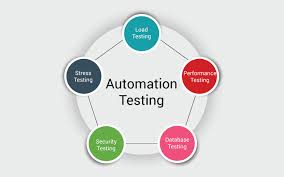One of the main features of mobile testing is the need to test on a large number of device configurations, since the application can behave differently on each individual phone model. Defects that appear on specific devices are device-dependent. Their cause may be in the OS version, interaction with the manufacturer’s firmware, non-standard screen resolution or pixel density, Bluetooth versions, etc.
Since mobile applications often do not have very cumbersome functionality, it is better to write a test model in the form of many simple tests. Thus, you will get a clearer and simpler picture of testing than if you have extensive tests that include many checks. It will also be easier to edit when requirements change.
Benefits of manual testing services
Manual testing is the process through which a developer, or a manual QA tester, tests a product: website, platform, SaaS, whatever, to find defects and bugs. Manual testing is ideal for those projects with a small budget, or short-term (up to 2 months). Manual testing takes place on behalf of the tester, who acts as the end user of the system.
Checks all functions, links, menu items, etc. To avoid broken links or non-working functionality. Often the tester also uses multiple browsers to reach as many users as possible, and of course the mobile version. For example, the most popular are Chrome, Firefox, Safari, IE11, Edge. With mobile devices, everything is somewhat simpler - just Google Chrome and Safari for iOS devices with manual testing services. But the question arises - is it worth starting with a website or a mobile application? Or both at the same time?
What are the advantages of manual testing web services?
Low costs. In the short term, this is a financially beneficial solution.
Allows you to see the site through the eyes of the user. A tester is, first of all, a programmer. Having knowledge in the design of interfaces, graphical interfaces, backend parts, frameworks and their interactions. He walks around the site with all these skills behind his back, and of course the skills of the “user”.
Flexibility. If the project is designed and programmed using Agile, Scrum or Kanban methodology, this may be the greatest advantage. If you quickly implement new features and want to be sure that they work correctly - manual testing allows you to do it quickly.
Cons of manual testing
Limitations. Unfortunately, you cannot check everything in manual mode. For example, stress testing is almost impossible. To find out what kind of web server can withstand the load, you actually need to give such a load.
Boring. For the most part, it concerns the tester himself, however, repeating the same actions can be somewhat boring for a person.
Quality. On large projects, manual testing loses its quality. Lack of time and scattered attention are in the first place.
Automated or Manual Testing?
There are a few main questions:
- What is the term and scope of your project?
- Does platform support matter?
- Are you looking for a profitable and affordable testing solution?
If you answered yes to at least one of the questions, then automated testing is most likely suitable for you. This is especially indispensable when creating marketplaces or when creating food delivery applications. In our experience, achieving the best result is only possible by combining both types of testing. This will minimize risks, mitigate costs and release the desired product very quickly. Moreover, you will also decide the visual component, web design trends and https://giraffestudioapps.com/help you with this.

Who needs automated or manual testing?
The first wave includes SaaS platforms, and those that “make money” from their site. Online casinos, trading platforms. Highly loaded projects from any industry also need automated testing. Manual testing is ideal for small business websites, personal websites, and other small web projects.
